(Not So) Brief History Of The Brazilian Car. Parte Trs

This is part three of the Pictorial History of the Brazilian Car, a five part series, brought to you by our boy in Brazil, Marcelo de Vasconcellos. Part one one took you back to the beginnings, part two did let you revisit the turbulent 60s. This part takes you to …
The 80s
For countries up north, this was the end of the malaise and the beginning of party time. In Brazil, it was the decade of doom and gloom. Politically, the military regime was running out of steam. Gradual democratization was unavoidable. Culturally, the country exploded. Censorship, which had marked the 70s, disappeared. Playboy showed full frontal (female) nudity to grateful teenage boys and men. Brazilian rock came into its own. Economically, the country tried hard, but ran hard to stay in the same place. This decade is often referred to as the lost decade. Foreign debt was the overriding problem. The dollar became king. Inflation was reaching hyper mode. People didn’t have money. Smaller and smaller cars took a bigger and bigger piece of the sales pie.
The decade came down to a continuance of 70s cars with new sheet metal. Engines also had a very familiar sound. Some could trace their coughing history back to the 60s (GM, Ford). Alcohol-fueled cars became the norm.
Volkswagen had retired the Beetle in Europe. In Brazil, Beetles multiplied unabashed, unaltered and made from tired tools.
Volkswagen also launched the Gol, which would kill the more technically modern Passat. Deliberately?
The Gol marked some firsts for VW. It was a water-cooled car (something they had much ridiculed in their propaganda throughout their history in Brazil and elsewhere). It was also front wheel drive. The engine was however a sure sign of VW’s traditional ham-fisted engineering. It was mounted longitudinally (and would remain so until the Gol’s fifth redesign in the 00s), taking up much needed real estate from passengers. After a couple of mistakes, it would take first place in sales from Chevy’s Monza (which had taken over this position from the Beetle) and never (until today) let go. VW had finally found its Beetle substitute.
The Gol would spawn a very sprawling family. Here above the Voyage.
Then the Saveiro, for the handyman.
Finally the Parati, for folks who want their luggage in plain view.
VW also ventured for the first time into the, well, for them, luxury market. They launched the Santana. Basically, a VW version of Audi’s 80. Or a Passat with a trunk. or a Passat Variant that was called Santana. It brought many new technologies to Brazil. Things like onboard computer and fuel injection. I learned to drive in my dad’s wagon version (the Quantum). Comfortable, it introduced Brazilians into a new world of luxury, which up until that point had been represented by Chevy’s Opala. I remember it did cost about the same as a BMW Series 3 in America.
GM kept the Opala. Here is its 80s version.
At least the design had changed a bit over time. Though it was evident to the naked eye just how outdated and outclassed this car was. Yet, again, it was one of the few options available to Brazilians and it enjoyed a huge cachet. GM also kept the Chevette. It was the same sad story as with the Opala, new design, old mechanicals and engines. Yet it sold.
GM’s most important car for the decade was the Monza. Based on Opel’s Ascona, it was a resounding hit. The Monza took over the middle class dreams of what a dream car should be (before this role belonged to Ford’s Corcel). It actually lead the sales chart for a couple of years.
In a rather bizarre, but later common, twist of fate, GM also started to produce the Opel Kadett. While abroad the 70s Chevette had given rise to the 80s Kadett and was killed off by the newer car, in Brazil both versions lived on, side by side. This strategy was later widely copied by other makers, much to the bewilderment of the market .
The Kadett was launched in 1989 and created great anticipation, enthusiasm and goodwill and press for GM. This was due to the fact that this was the first all-new launch after a hiatus of 5 years! 5 years without any new launches. Malaise indeed. The most recent launch before it had been that of Fiat’s Uno (which had been launched in 1984). It also was a thoroughly modern car and blew most of everything that was available (especially in its segment) out of the water. A taste of what Brazilians would experience in disbelief in the 90s.
Ford meanwhile would depend heavily on the Escort. Launched with approriate fanfare, Ford’s world car enjoyed much initial success. I had one exactly like the one in the picture (though mine was bordeaux in color). Boy oh boy! I was living the life. Flying high.
However, that was an expensive Escort for Brazil. Cost cutting measures followed, and damaged the car’s image. Such things as using the 60s Renault CHT engine instead of a really modern mill that could compete against the others. As it turned, out that engine was good for economy and it was durable, but it was much less powerful than what the competition had to offer.
In Brazil, the Escort just couldn’t compete in price with the likes of VW’s Gol, Chevy’s Chevette or Fiat’s 147 and later Uno. Gradually but surely, Ford lost market share in Brazil. So much so that by the end of the decade, Ford’s very existence in the Brazilian market came into question. Yet they could never convince themselves to bring in a smaller car (like the European market Fiesta). They decided to tell themselves and the market that their car in fact competed against everything from the Chevette and Uno below, to the Monza above. Very foolhardy.
Fiat meanwhile hammered away with their 147, until in 1984 the Uno came to Brazil. It gained traction slowly. Initially rejected, it would eventually define what a modern Brazilian car is.
The Uno sired a sedan, the Premio.
The Uno begat a station wagon, the Elba.
The Uno even fathered a pick-up, the LX. A van version (which kept the Fiorino name) survives even today. All body styles of this car were exported all over the world. Even back to Europe.
That concludes part three of the Pictorial History of the Brazilian Car. Come back tomorrow for Parte Quatro, when we enter the 90s.

More by Marcelo de Vasconcellos
Latest Car Reviews
Read moreLatest Product Reviews
Read moreRecent Comments
- Corey Lewis Facing rearwards and typing while in motion. I'll be sick in 4 minutes or less.
- Ajla It's a tricky situation. If public charging is ubiquitous and reliable then range doesn't matter nearly as much. However they likely don't need to be as numerous as fuel pumps because of the home/work charging ability. But then there still might need to be "surge supply" of public chargers for things like holidays. Then there's the idea of chargers with towing accessibility. A lack of visible charging infrastructure might slow the adoption of EVs as well. Having an EV with a 600+ mile range would fix a lot of the above but that option doesn't seem to be economically feasible.
- 28-Cars-Later I'm getting a Knight Rider vibe... or is it more Knightboat?
- 28-Cars-Later "the person would likely be involved in taking the Corvette to the next level with full electrification."Chevrolet sold 37,224 C8s in 2023 starting at $65,895 in North America (no word on other regions) while Porsche sold 40,629 Taycans worldwide starting at $99,400. I imagine per unit Porsche/VAG profit at $100K+ but was far as R&D payback and other sunk costs I cannot say. I remember reading the new C8 platform was designed for hybrids (or something to that effect) so I expect Chevrolet to experiment with different model types but I don't expect Corvette to become the Taycan. If that is the expectation, I think it will ride off into the sunset because GM is that incompetent/impotent. Additional: In ten years outside of wrecks I expect a majority of C8s to still be running and economically roadworthy, I do not expect that of Taycans.
- Tassos Jong-iL Not all martyrs see divinity, but at least you tried.



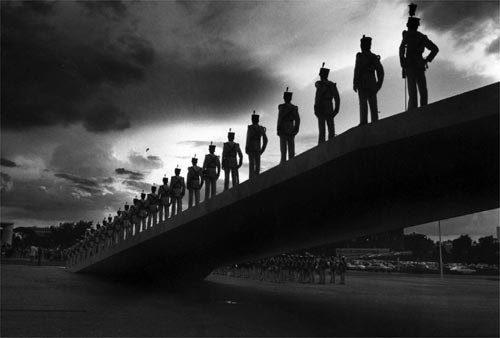






























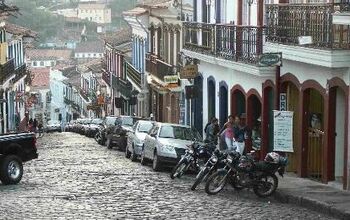
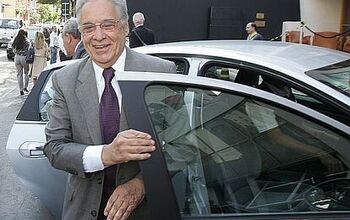
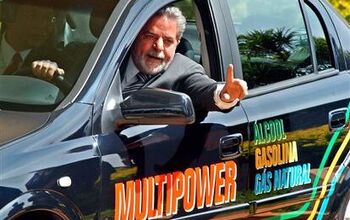










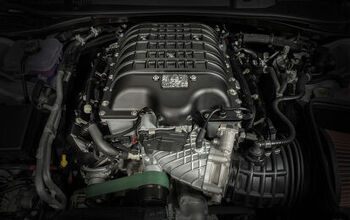
Comments
Join the conversation
Oi Marcelo, The Quantum/Santana were the 2nd generation Passat B2 platform, also Audi 80 or Audi 4000 (USA). Smaller platform than the Audi 100.
Marcelo: I have a relative that still has a Monza. Comfortable car for the time. Also the Fiorino its still sold here. Finally, the Saveiro was very, very popular between the young population looking for something cheap and fast. Thing is, they were not very safe (the frontal crumple zone were the driver knees and had no weight in the back) and become known as Camino al Cielo (Way to Heaven) because lots of irresponsible kids got killed on them.